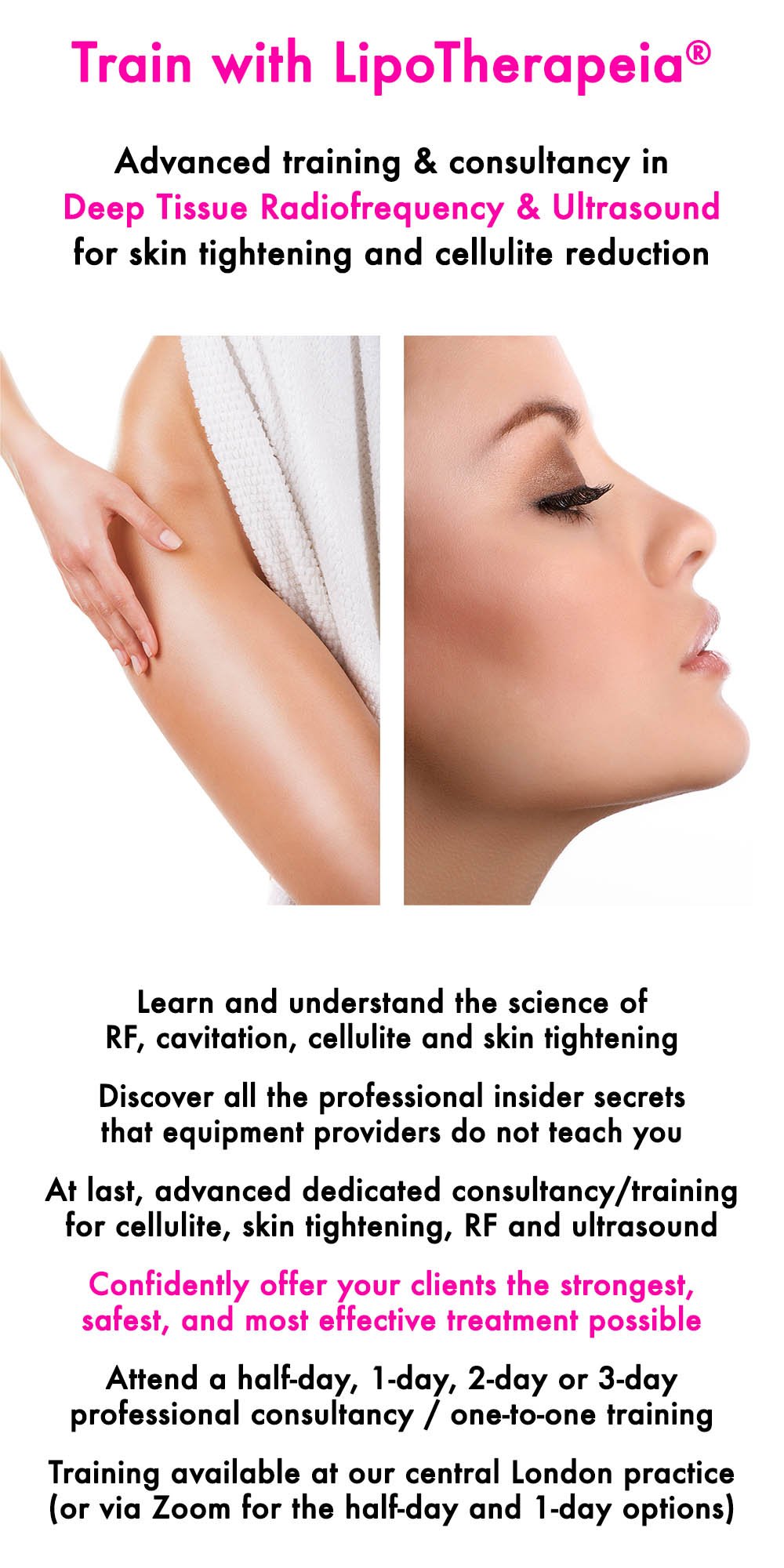Why do I have more cellulite after losing weight?
When you put on weight…
When you lose weight…
Cellulite before and after weight loss
What can I do about cellulite after weight loss?
What about extreme skin laxity after weight loss?
When you put on weight…
…adipocytes (fat cells) in your subcutaneous adipose tissue (i.e. fat UNDER your skin, what we call ‘fat’) fill up with fat and that gives you volume. Skin has to accommodate the excess volume by becoming longer.
At the she time, adipocytes in your more superficial hypodermal adipose tissue (i.e. fat INSIDE your skin, what we call ‘cellulite’) also fill up with fat and we call that cellulite.
When you lose weight…
…you mainly lose fat from the subcutaneous adipose tissue and not so much from the hypodermal one, which is more stubborn, as it tends to accumulate more fat than releasing fat.
Furthermore, when you lose weight you are left with the excess length of skin that used to accommodate the extra subcutaneous fat.
The combination of the still quite filled up hypodermal fat tissue and excess skin gives skin the puckered appearance of a deflated balloon, i.e. more visible cellulite.
Cellulite before and after weight loss
Se we can have three scenarios:
We can have less hypodermal fat reduction during weight than subcutaneous fat reduction. In this scenario, cellulite may not be so visible, due to skin being more taught. After weight loss, skin becomes more “deflated” and therefore cellulite is fully visible.
Of course, in some cases hypodermal and subcutaneous fat are equally reduced during weight loss and that makes cellulite appear smoother than before or at least the same as before - not worse.
And in many cases hypodermal fat reduction is greater to subcutaneous fat reduction, so cellulite looks better after weight loss.
What can I do about cellulite after weight loss?
As hypodermal adipocytes that cause the cellulite appearance can be quite stubborn, losing further weight to empty them does not make sense, as your face may become too gaunt.
Furthermore, skin will gradually contract a bit after weight loss, but not fully.
The best way to tighten skin is deep-acting, high-power radiofrequency, which also helps with hypodermal fat reduction
High-power ultrasound cavitation will also help with hypodermal fat reduction
The combination of both is the most effective way to reduce cellulite and tighten the skin at the same time, naturally and safely
And of course you can follow our comprehensive “How to” guide with 100+ tips for cellulite reduction and skin firming.
What about extreme skin laxity after weight loss?
For extreme skin looseness after extreme weight loss, a thigh lift or tummy tuck surgery may be the only way to remove the excess length of skin.
Cellulite surgery is not recommended in most cases, as it usually causes more adverse reactions than cellulite itself.
Have a cellulite treatment in London with the cellulite specialists
At LipoTherapeia we have specialised 100% in skin tightening and cellulite reduction for more than two decades and 20,000+ sessions.
This is all we study and practise every day and have researched and tried hands-on all the important skin tightening equipment and their manufacturers.
As strong, deep acting radiofrequency and deep-acting, high-power ultrasound cavitation are the technologies of choice for skin tightening and cellulite reduction, we have invested in the best RF/ultrasound technologies in the world.
Furthermore, over the last two decades we have developed advanced treatment protocols in order to make the most of our technologies, for maximum results, naturally and safely.
Our radiofrequency/ultrasound treatments are comfortable, pain-free, downtime-free, injection-free, microneedling-free, 99.5%+ safe and always non-invasive.
And our focus is on honest, realistic, science-based treatment, combined with caring, professional service with a smile.
We will be pleased to see you, assess you, listen to your story, discuss your case and offer you the best possible treatment.
There are five ways to start treatment with us:
Book a FREE 15’ zoom consultation (UK only)
Book a 45’ in-clinic assessment and consultation plus skin ultrasound scan, to visualise skin laxity, cellulite, subcutaneous fat and potential fibrosis
Book an introductory treatment, which automatically includes free 30’ assessment and consultation
Book a course of 3x, 6x or 12x sessions, with the first session automatically including free 30’ assessment and consultation




![How to get rid of cellulite | 111 tips from the experts [2024 update]](https://images.squarespace-cdn.com/content/v1/5294cad9e4b009e918124a61/1582205124442-U31A5ECGNCG62VFPPJWJ/How+to+get+rid+of+cellulite+in+2020.jpg)


